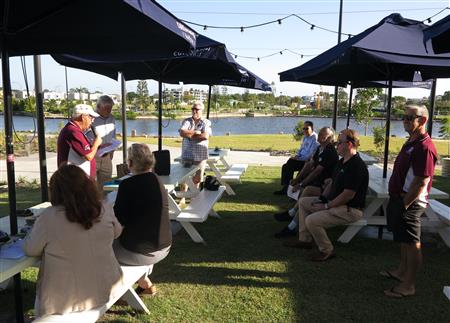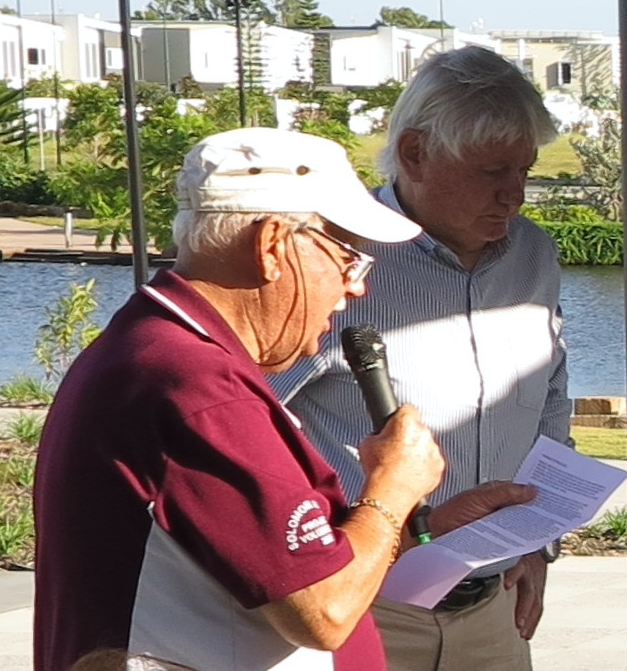
We met at The Cove Restaurant at Pelican Waters

Our chair was Jim, who introduced our guest and his neighbour, Bruce Lees
Apologies from James who has had cataract surgery, and Bernie
Deborah delivered the President Report
- Conference registrations are open
- PETS will be on 6 March
- We had members at the DIK (Donations In Kind) working bee with birthing kits being packed in containers going to Tonga PNG and Timor – Container cost seven increased over two years from $2000-$8000
Bruce has had seven family members in the AIF. His grandfather lived till into his 90s and was able to provide a lot of firsthand information. Bruce first visited the World War I battlefields in 1979 and since then has made about 30 trips. The landscape of the Somme region is virtually unchanged.
An interesting thing about the Australian forces is that they were all volunteers. 330,000 volunteers out of a population of only 5 million. 62,000 were killed and 50% were casualties including 32,000 missing. In comparison, in World War II, 27,000 were lost. Average age was 26 with a 16 the youngest.
In 1990 Bruce visited Gallipoli with his grandfather. His grandfather was only 19 when he visited for the first time. After Gallipoli the WW1 force were re-organised in Egypt, then sent to France via Marseilles, and then on to northern France where they suffered the worst 24 hours in Australian military history. 5533 were lost in one afternoon. 1916 was a bad winter and they struggled in horrendous mud and trench foot.

Battlefield archaeology
In 1917 in Belgium they suffered 38,000 casualties. In 1918 at Villers-Bretonneux they stopped the Germans. My notes get a bit difficult to interpret from here on in, but Monash had control of five divisions.Monash, who was British was previously in charge. He wore a slouch hat when visiting the troops are to get on-side. The Australians broke a lot of things including the Hindenburg Line.
The Germans wanted a truce, but… The last battle at Montbrehain involved three Australian battalions. Three company commanders with the units the entire time were all killed. The last Victoria Cross was awarded to Ingram - he stormed a house with machine gun posts. The house is still there. Battalions comprised a thousand men, but by the end of the war somewhere down to 80.
The Americans arrived in 1918, brought into the war German U-Boat attacks. They were gung-ho but in-experienced, and suffered a heavy death toll - 120,000 in five months, compared to 62,000 Australians for the whole duration of the war.
There are 1300 World War 1 cemeteries, 300 in Belgium. Nobody was brought home. The Commonwealth War Graves Commission does a great job.
The AIF were the highest paid army, and not liked because where ever they went, prices increased by three. They were also the worst disciplined army in the Empire. There was no death penalty for bad behaviour, unlike Britain, who shot 306 of their own. The average rate of VD in the troops was 25 per thousand, but for the Australian troops it was 184 per thousand.
Bruce is involved in a business called Sacred Ground Tours based in France. They run small tours and consequently can visit more unusual places. They have the old trench maps to guide them.
Jim thanked Bruce for the talk, and also thanked Pierre and Frank for the wonderful breakfast.

I wasn’t as quick as last week in jotting all the Sergeant’s lies down, but I secretly managed to photograph his cheat sheet.

